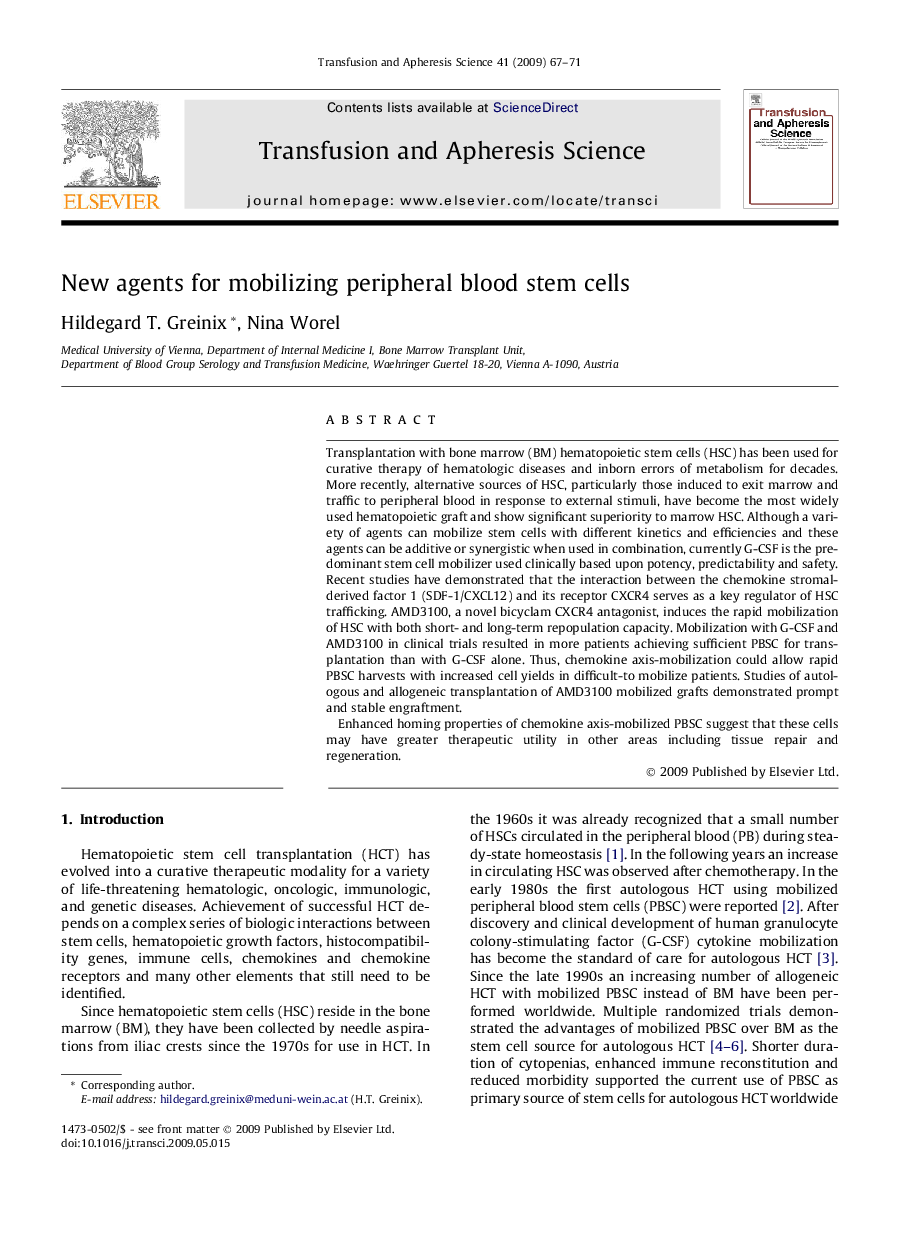| Article ID | Journal | Published Year | Pages | File Type |
|---|---|---|---|---|
| 3336121 | Transfusion and Apheresis Science | 2009 | 5 Pages |
Transplantation with bone marrow (BM) hematopoietic stem cells (HSC) has been used for curative therapy of hematologic diseases and inborn errors of metabolism for decades. More recently, alternative sources of HSC, particularly those induced to exit marrow and traffic to peripheral blood in response to external stimuli, have become the most widely used hematopoietic graft and show significant superiority to marrow HSC. Although a variety of agents can mobilize stem cells with different kinetics and efficiencies and these agents can be additive or synergistic when used in combination, currently G-CSF is the predominant stem cell mobilizer used clinically based upon potency, predictability and safety. Recent studies have demonstrated that the interaction between the chemokine stromal-derived factor 1 (SDF-1/CXCL12) and its receptor CXCR4 serves as a key regulator of HSC trafficking. AMD3100, a novel bicyclam CXCR4 antagonist, induces the rapid mobilization of HSC with both short- and long-term repopulation capacity. Mobilization with G-CSF and AMD3100 in clinical trials resulted in more patients achieving sufficient PBSC for transplantation than with G-CSF alone. Thus, chemokine axis-mobilization could allow rapid PBSC harvests with increased cell yields in difficult-to mobilize patients. Studies of autologous and allogeneic transplantation of AMD3100 mobilized grafts demonstrated prompt and stable engraftment.Enhanced homing properties of chemokine axis-mobilized PBSC suggest that these cells may have greater therapeutic utility in other areas including tissue repair and regeneration.
